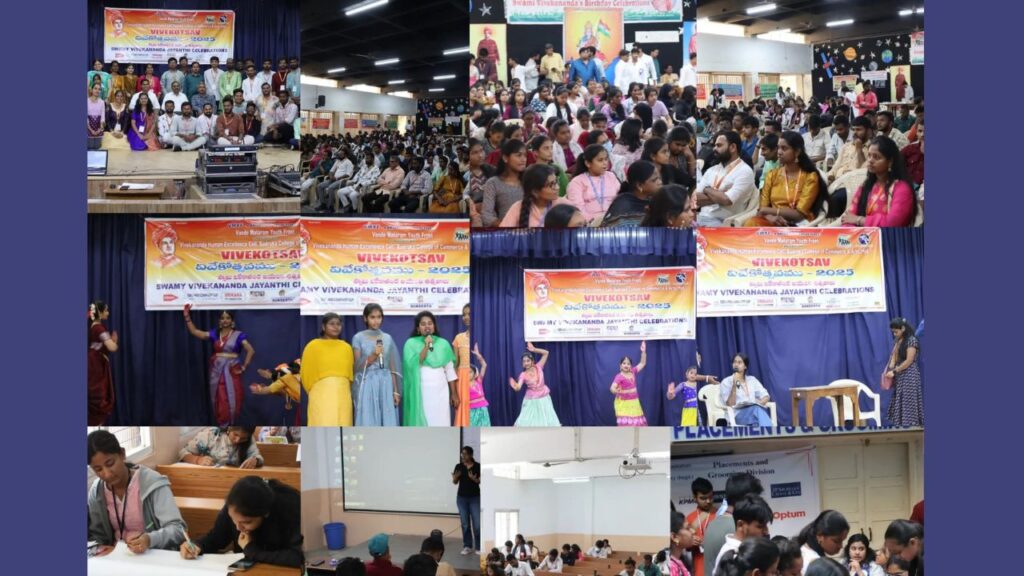Vivekotsav-2025: Celebrating Youth, Talent, and Inspiration
A Grand Celebration of Knowledge and Talent
Vande Mataram! The Vivekananda Memorial Youth Foundation (VMYF), in collaboration with Badruka College, successfully hosted Vivekotsav-2025 on Sunday, February 16, 2025, at Badruka College, Kacheguda. The event saw enthusiastic participation from around 300 students representing various Degree, B.Tech, and Postgraduate colleges, making it a vibrant and dynamic gathering.
Enthralling Competitions
The event featured a diverse range of competitions, including:
- Essay Writing
- Elocution
- Quiz
- Skit
- Poster Presentation
- PowerPoint Presentation (PPT)
- Group Singing
- Group Dance
Students showcased their talents, engaging in healthy competition and demonstrating creativity, knowledge, and teamwork.
Inspiring Words from the Chief Guest
A major highlight of the event was the presence of Dr. G. Satheesh Reddy, former Chairman of DRDO, as the Chief Guest. In his inspiring speech, he emphasized the importance of perseverance, innovation, and youth empowerment. His words deeply resonated with the students, motivating them to pursue excellence and contribute to the nation’s progress.
Recognizing Excellence
The program concluded with an award ceremony where winners of various competitions were honored with prizes and certificates, recognizing their dedication and achievements.
Role of CSR Memorial Foundation and Other Sponsors
The success of Vivekotsav-2025 was made possible through the support of generous sponsors, including SBS & Co, CSR Memorial Foundation, Srikara Foundation, Helping Hands, Sangam Hotel, and Patolla Brothers.
Notably, CSR Memorial Foundation played a key role in backing the event, reinforcing its mission of fostering education, youth empowerment, and social development. The foundation has been actively involved in various initiatives aimed at supporting students through:
- Scholarships
- Skill development programs
- Leadership training
These initiatives ensure a brighter future for young minds by equipping them with the necessary skills and opportunities to excel.
Conclusion
With its resounding success, Vivekotsav-2025 provided a meaningful platform for students to showcase their skills while embracing the values of discipline, teamwork, and intellectual growth—true to the teachings of Swami Vivekananda.

